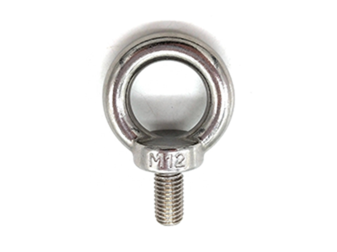Pro . 06, 2024 06:33 Back to list
How to Properly Install a Carriage Bolt for Your Project
How to Install a Carriage Bolt A Step-by-Step Guide
Carriage bolts are a popular choice for various DIY projects and constructions due to their unique design and functionality. They are often used in wood construction, securing heavy pieces together, or even in metalworking applications. Installing a carriage bolt might seem challenging at first, but with the right tools and a clear understanding of the steps involved, you can easily complete the task. This article will guide you through the installation process of a carriage bolt effectively.
What is a Carriage Bolt?
A carriage bolt is characterized by its round head and a square neck that prevents it from turning when tightened. This design allows for secure fastening of materials like wood or metal without needing a nut on the opposing side. Carriage bolts come in various lengths and diameters, making them versatile for different projects.
Tools and Materials Needed
Before you start installing a carriage bolt, gather the necessary tools and materials. You will need
- Carriage bolts - Washers (optional but recommended) - Nuts (if needed for your project) - Drill and drill bits - Bolt cutter (if you need to cut the bolt to size) - Hammer - Wrench or socket set - Measuring tape - Pencil or marker for marking
Step-by-Step Installation Process
1. Select the Right Size Bolt The first step is to choose the appropriate size carriage bolt for your project. Measure the thickness of the materials you’ll be joining and select a bolt long enough to pass through both pieces with a bit of extra length for the nut and washer if used.
2. Mark the Spot Using your measuring tape and pencil, mark where you will be drilling the hole for the carriage bolt. Ensure that the holes will line up properly when the two materials are joined.
installing a carriage bolt

3. Drill the Hole With your drill, begin drilling at the marked spot. Make sure to use a drill bit that matches the diameter of the carriage bolt. Drill straight through the materials to create a clean hole, ensuring that it is large enough for the bolt to fit through without being too loose.
4. Insert the Carriage Bolt Once your hole is drilled, insert the carriage bolt through the hole from the underside of the bottom piece of material. The square neck should sit snugly in the hole you’ve created, preventing it from spinning when you tighten it.
5. Add a Washer (Optional) To increase the strength of the connection and protect the surface of the material, you can place a washer over the head of the carriage bolt before tightening it. This helps distribute pressure and reduces the risk of damage.
6. Secure with a Nut (if applicable) If your project requires a nut, thread it onto the end of the carriage bolt that is protruding through the top piece of material. Use your wrench or socket set to tighten the nut firmly against the material. Be careful not to over-tighten, as this can lead to damaging the materials.
7. Hammer Down (if necessary) In some cases, you may want to use a hammer to gently tap the carriage bolt into place to ensure it is set properly and won’t move. Be cautious not to damage the bolt or the surrounding material.
8. Final Check Once everything is tightened and secure, double-check your work. Ensure that the carriage bolt is tight and that the structure feels solid. If there’s any wobbling or movement, revisit your tightening to adjust as necessary.
Maintenance and Considerations
After installing carriage bolts, it’s important to check them periodically to ensure they remain tight. Environmental factors, such as moisture and temperature fluctuations, can cause materials to expand and contract, leading to loosening over time. It’s practical to periodically inspect high-stress areas, particularly in outdoor or heavy-use applications.
Conclusion
Installing a carriage bolt is an efficient way to secure materials together in your DIY projects. With these steps, you can achieve a solid and lasting connection. Whether you’re building furniture, constructing a shed, or working on a creative project, understanding how to properly install a carriage bolt will enhance your construction skills and ensure successful results. Happy building!


